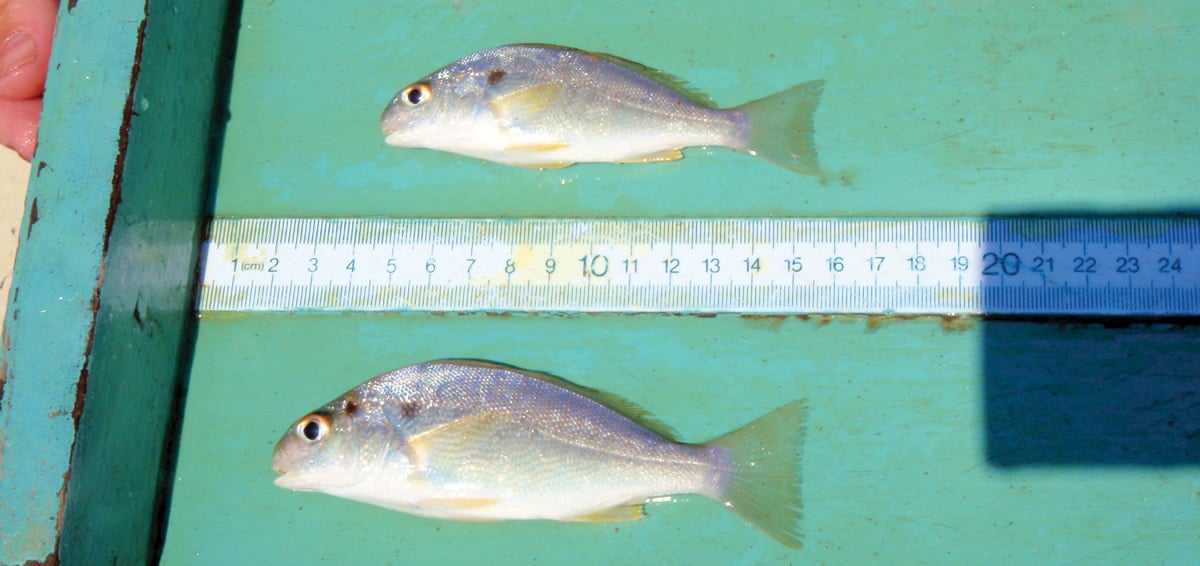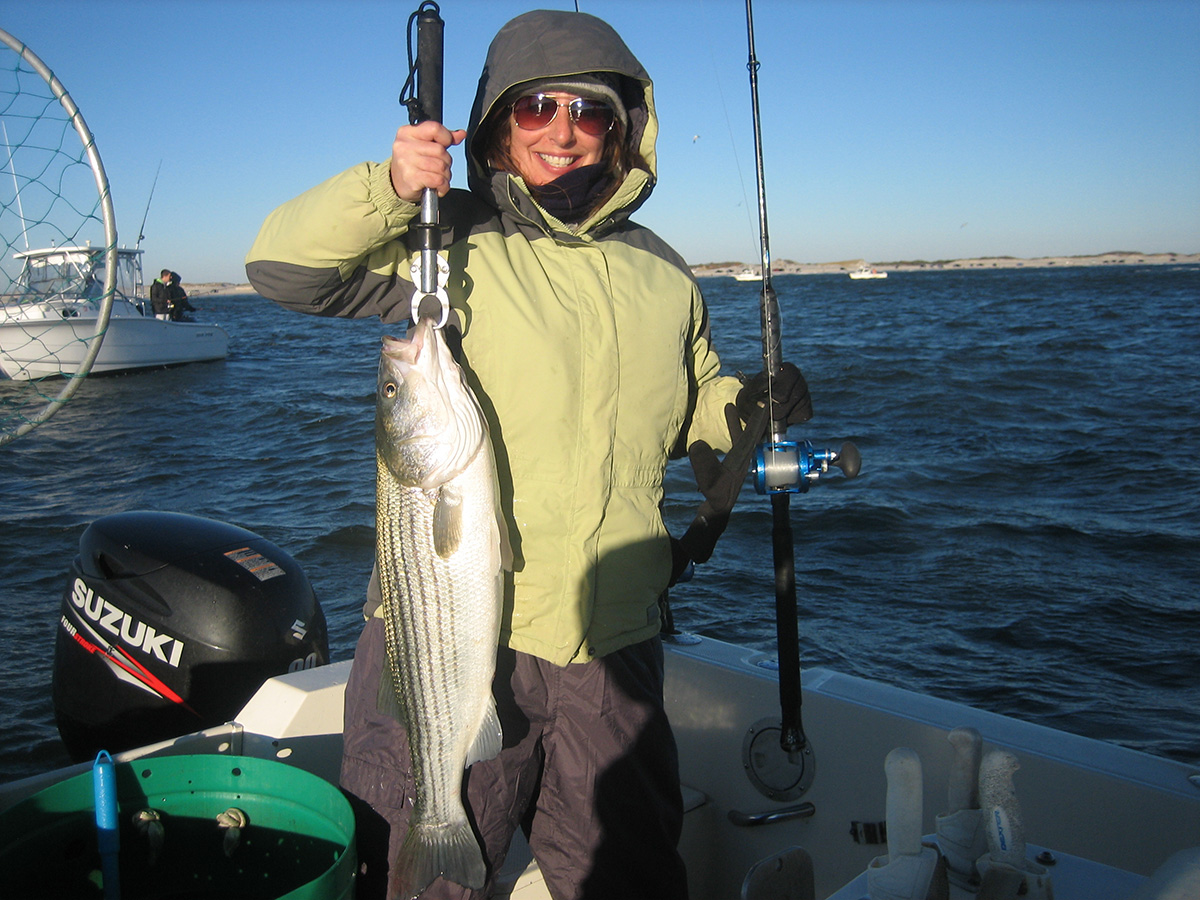
Still a bit of a mystery, these two members of the drum family get more local attention than you might think.
The National Marine Fisheries Service (NMFS) has been warning anglers for years that climate change would bring red drum into more northerly areas, and the same movement would apply to other species whose normal habitat is south of Delaware Bay. As noted in an article I wrote earlier in the year, there were some signs of small red drum in northern Jersey waters last year.
Yet, as outlined in my April 2014 article Climate Change: A Different Perspective, those movements were very small compared to the historical data proving that red drum (then known as channel bass) were the primary inshore gamefish of the Central Jersey Shore over 100 years ago when waters were presumably cooler before global warming set in.
Spot and croakers were also probably more common north of Delaware Bay in those days. But those species have been up-and-down over the years without any rhyme or reason. It appears most likely that a bumper year class to the south creates the need to spread out into additional feeding areas.
Though both species are prized as food fish, most anglers look at them as great live baits for everything from striped bass to bluefish, big weakfish, jumbo fluke, cobia, and even offshore tunas and dolphin. That also applies in other areas, especially in Delaware, Maryland and Virginia (DELMARVA) where most tackle shops carry them for live bait.
Bang the Drum
My first experience with live croakers actually occurred decades ago in the Gulf of Mexico at an oil rig off Louisiana where we caught the croaker off bottom and then floated them away from the rig to hook 30- to 40-pound king mackerel. As a youngster growing up on Long Island, I had heard about the massive runs of Lafayettes that would appear out of nowhere some falls in New York Harbor. I never got to experience them, and it was many years later before I learned that the fish involved was the spot.
The spot acquired the local name Lafayette because there was an abundance of them during the year Lafayette came over from France to lead an army in the Revolution. Only the oldest of greybeards are familiar with that name now, but there is a mention in Field Book of Marine Species of the Atlantic Coast by Charles M. Breder Jr. (G.P, Putnam’s Son, NY 1929) that in 1925 the Brooklyn Edison Company and other concerns experienced difficulties when literally tons of Lafayettes became clogged in their condenser pumps. Other great runs occurred in New York Harbor in 1917, 1908 and 1902. What brought about those huge runs and why they haven’t appeared since is a mystery.
Spot and croaker belong to the drum family Sciaenidae, which includes the red and black drum, weakfish and northern kingfish—all of which are cyclical in nature and subject to big shifts in abundance. Weakfish are a perfect example of that as they’ve gone from superabundant to scarce in very short periods several times during my lifetime. I had thought that species (which spawns in many areas, grows and matures quickly, and is fairly long-lived) would be an ideal candidate for management. Yet, the boom and bust has continued.
Cape May Goodies
Spot are often referred to as Norfolk spot because they’re such an important panfish in that area, though a 1-pounder would be a trophy. While sailing out of Norfolk in 1959 as a destroyer officer, I made a few trips to the Ocean View Pier in Virginia Beach to join in the sport of catching spot, though the largest I managed was just 10-1/4 inches.
They’re also known as Cape May Goodies down in South Jersey (The New Jersey state record is just 13 ounces, set by Robert Belsky Jr. in 2003 at Little Sheepshead Creek behind Beach Haven Inlet.). Spot are easily distinguished by the large yellow-black spot just behind the gill slit. The young also display 12 to 15 oblique short yellow bars that fade with age. They inhabit a wide variety of habitats, and can tolerate everything from freshwater to waters almost twice the salinity of the ocean. The young feed on plankton, while adults prefer worms and small fish.
The Atlantic croaker is often found in the same areas as spot, and is a larger panfish. They are usually called hardheads in the Chesapeake and may grow to about 10 pounds. The New Jersey state record is an impressive 5-1/2 pounds set in 1981 by Frederick Brown in Delaware Bay where the charter and headboat fleet out of bayshore ports like Fortescue has enjoyed a good catch of hardheads in a few of the last handful of seasons. Croaker are a light silvery-grey above with short, narrow bars all fading to a white underside.
Croakers are often mixed with weakfish along the Jersey Shore in the late summer and fall. Small strips of squid usually work well for them, and they will hit very small jigs being used for weaks. Though they appear to be husky fish, the yield is poor. While chartering out of Point Pleasant many years ago, my party had a good mixed catch of weaks and croakers drifting south of Manasquan Inlet. However, when I started filleting I was surprised to see how little meat I was getting due to the large rib cage. I finally reverted to old-fashioned scaling, gutting and heading for use as a whole fish rather than wasting so much meat.
Northern Oddities
Capt. Tommy Joseph of Fish Tank out of Belmar is a veteran bottom fisherman who used to put in many late summer days drifting off the Spring Lake Hotel for weakfish and croakers. His regular customer, ex-heavyweight champ Larry Holmes, particularly enjoyed that action, but Joseph hasn’t had that fishing in seven or eight years. He intends to give it a try again this fall as with the lack of weakfish to fish for we might never know if there are croakers on the bottom. One late summer when croakers were abundant, I was able to cast squid strips from the Bay Head surf and catch those hard-striking fish on every cast.
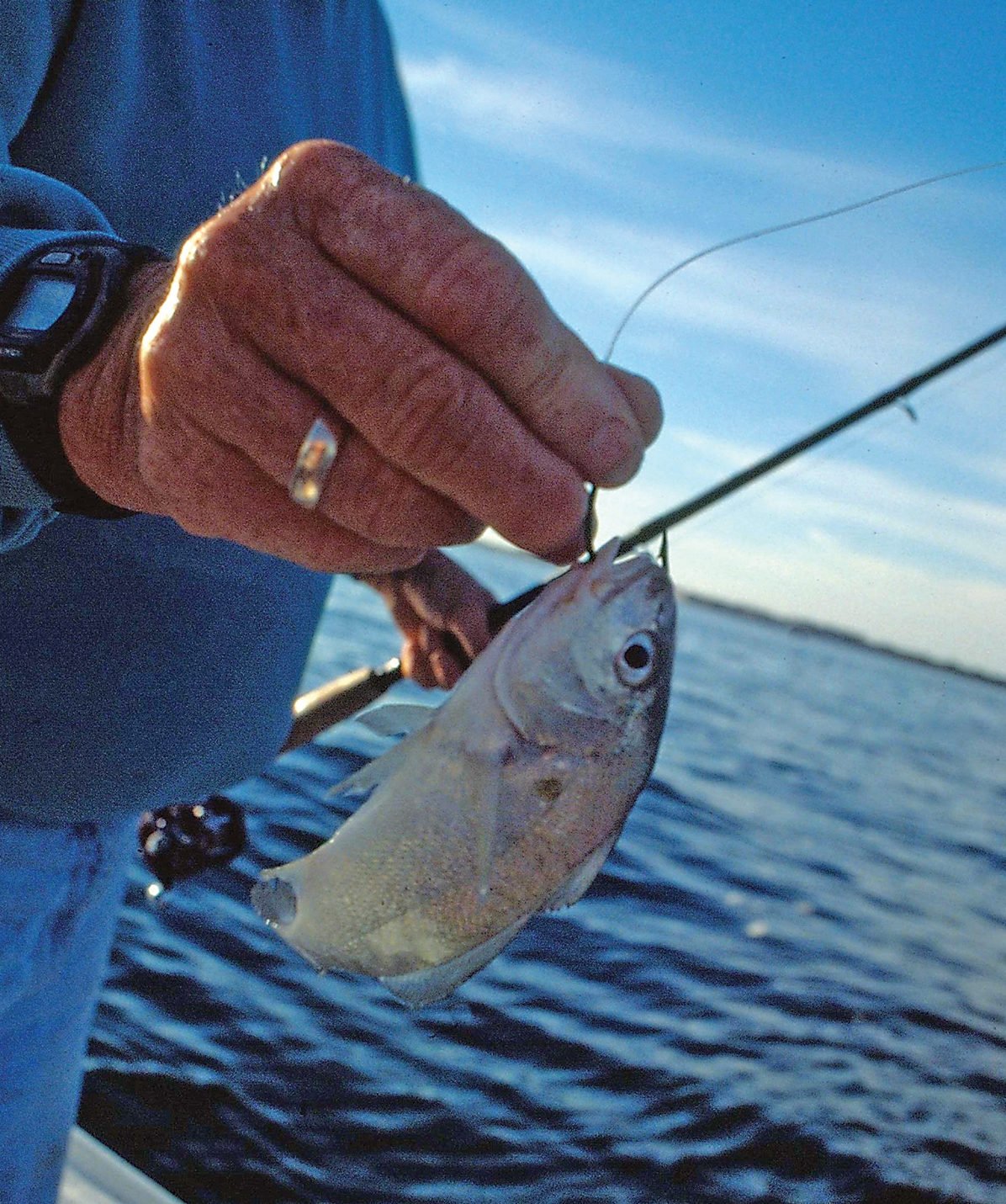
The oddest recent appearance of spot and croakers occurred during the spring of 2013 when waters were still cool. Yet, both species flooded into Raritan Bay as if it was a regular stop on their journeys. Chuck Many would stop just yards from his dock at Gateway Marina in Highlands to catch spot and croaker on sandworms in the mouth of the Shrewsbury River before adding live bunker for additional striper bait on his Ty Man. One time that spring he threw the cast net on a strange looking reading and came up with a net full of spot and croaker that weren’t easy to clear from the net due to their spines.
Many loves to use both spot and croaker for stripers as they can be fished without sinkers on a slow drift since they swim straight down to the waiting bass and are almost never refused.
Anglers in Raritan Bay soon adapted to the opportunity and were filling buckets with tasty panfish for which there were no restrictions at all. That’s still the case in New Jersey, though Delaware has an 8-inch minimum on croaker. I assumed that we’d have a good fall run that year, but unfortunately that wasn’t the case.
Why all those spot and croaker appended in Raritan Bay that spring remains a mystery. Though both species are often found in the same areas, it’s even more mysterious why both would show up in those cool waters in such quantities. Some have speculated that it might have resulted in some way from the devastation of super storm Sandy the previous year. There’s been no repeat of that spring fishery since, and I wouldn’t count on seeing it occur again.
Though the volume isn’t there, the Atlantic States Marine Fisheries Commission (ASMFC) considers spot and croaker to be in good shape. They have a management system that utilizes a “traffic light” analysis based on abundance and harvest, which would serve as a warning if management might be needed. The biggest threat to the fisheries appears to be by-catch in the small mesh shrimp fisheries off the Carolinas. Plan coordinator Mike Schmidtke said the latest assessment wasn’t accepted after peer review, and there appears to be some confusion about how many juveniles are being mixed in with adults in various surveys.
South/Central Focus
Relatively few anglers take advantage of the opportunity to catch small spot for bait, though folks chum pot fishing with the kids in late summer and early fall will put a few blowfish in the fish box while saving spot for the livewell. Noted Long Beach Island striper pro Mike Greene of Lucky Stripes Fishing Charters told me he’s been catching spot off local docks on sabiki rigs; but don’t try that technique in Maryland, as that state prohibits the use of sabiki rigs in their waters. Small pieces of bait on tiny hooks also do the job.
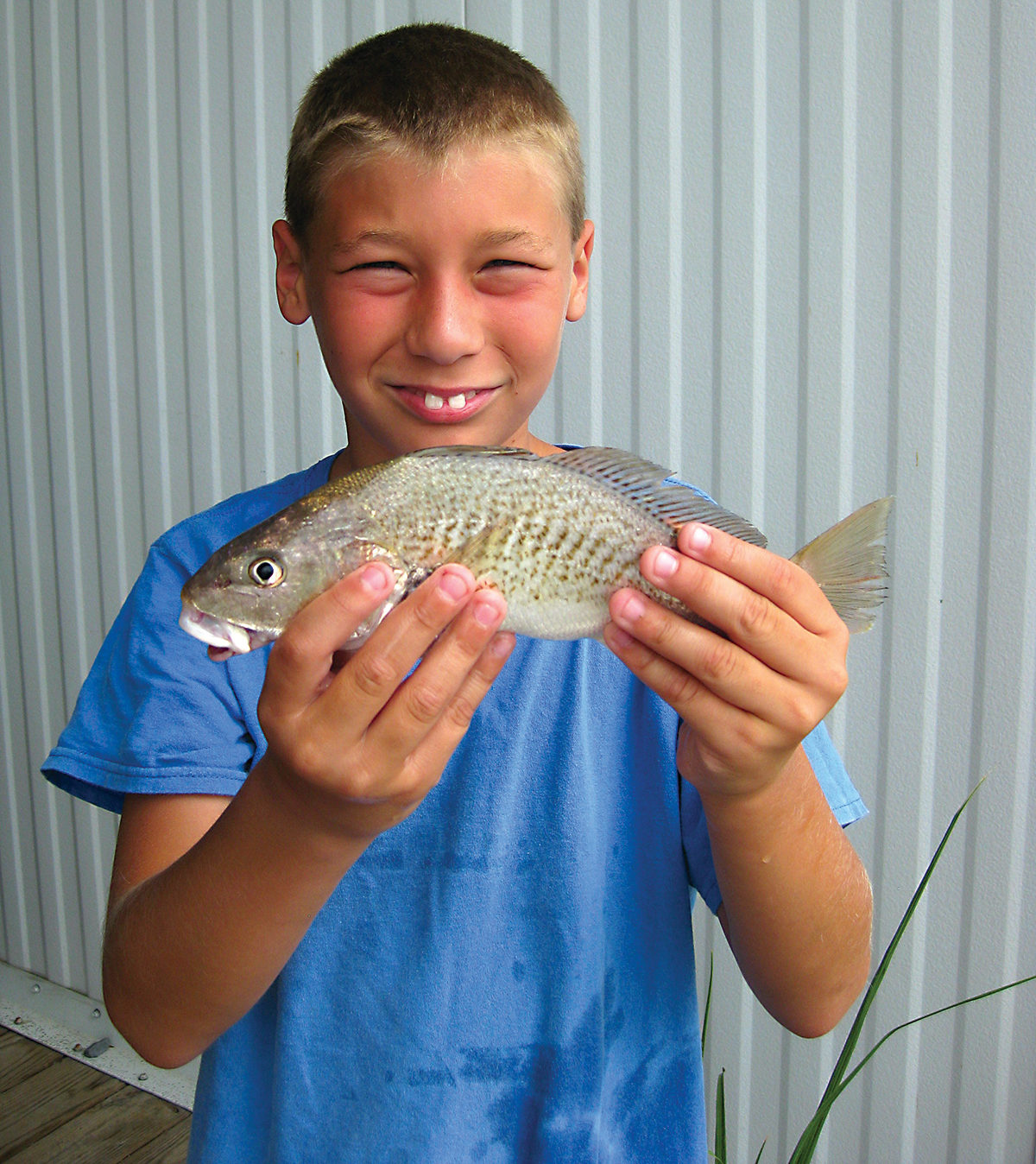
The Fisherman’s Jim Hutchinson tells me that charter skippers in Central and South Jersey often throw their fish carcasses off the ends of docks to draw spot for later capture as live baits. Those fish survive well in live bait cages where there’s a good flow of water. However, Capt. Dave De Gennaro of Hi Flier at Barnegat said otters are a big problem as they’re very clever about getting into cages for a free meal.
De Gennaro is one of the handful of skippers who makes good use every year of live spot for striper bait. He regularly drifts in Barnegat Inlet during October and November for lots of striper action. He often also has large live peanut bunker at the same time, but the expensive spot usually are hit first. Very lively baits are important, though I once caught two bass on the same spot while fishing with De Gennaro. Surprisingly small stripers inhale spot, but so will the largest bass in the area. He used to catch and store them, but now resorts to paying $2.50 each, which was the rate for small spot at Absecon Bay Sportsman Center as this piece was written, though larger spot cost offshore fishermen $4 each. ASMFC’s Schmidtke said the latest assessment didn’t receive peer review approval, and they are puzzled as to why croaker abundance seems to be high while harvest is declining. There seems to be a lot of juveniles, but not enough adult croakers to provide the level of landings in the Chesapeake area, which would indicate the likelihood of a solid showing off the Jersey Shore – though with spot and croakers you never know!
| SPOT & CROAKER |
|---|
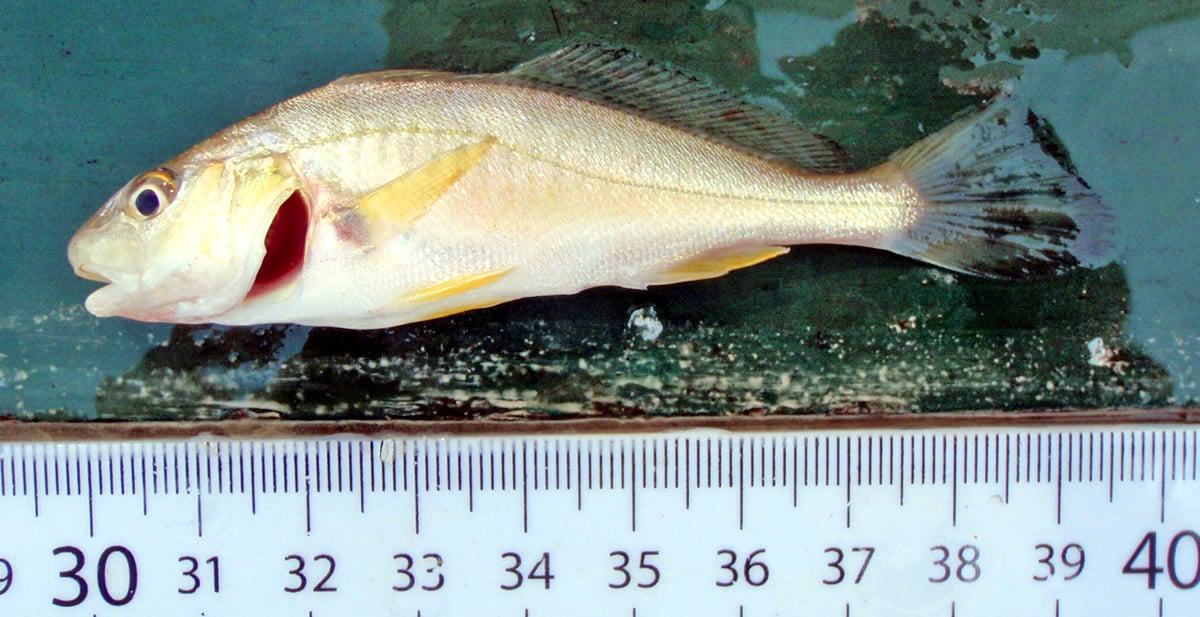
Atlantic croaker might tape out to 12 inches in length, weighing from a half pound to 2 pounds on average. Adult croaker have a silvering with pinkish casting for coloring; older fish have a brassy color with vertical dark stripes, and juvenile fish are silver and iridescent. A noticeable characteristic of croaker is the three to five barbells below the chin. These whiskers are used to locate food along the sea floor. The spot is a commonly used baitfish. Its name comes from the predominant spot located just behind the gills. Spot primarily feed on organic detritus, small crustaceans, and a variety of invertebrates. This species primarily inhabits a range of marine environments, especially areas of brackish waters with sand or mud bottoms, but migrates to deeper waters during times of spawning. Photos and info care of the New Jersey Division of Fish & Wildlife. |

